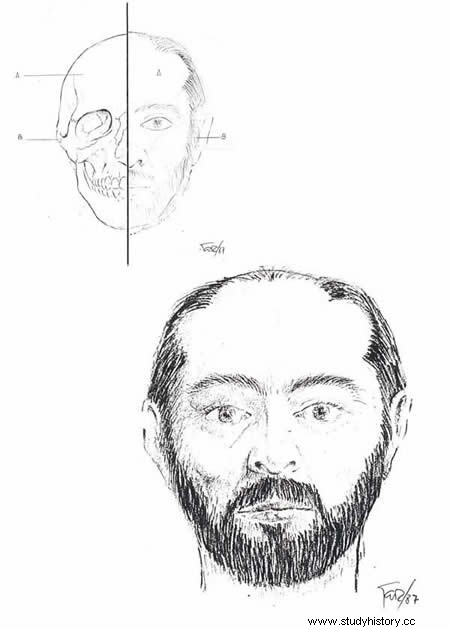Present in many cultures of our world, it is perhaps the most universal of all myths. The werewolf is a legendary creature that goes back almost to the very origin of humanity and its long shadow continues to terrify the populace even today, especially and especially during full moon nights. Could he be otherwise? But sometimes reality is stranger than fiction, and here in Spain we also had, or rather suffered, the adventures of our peculiar werewolf. The Galician Manuel Blanco Romasanta He committed, in the mid-nineteenth century, between 9 and 13 brutal murders of women and children whose fat he extracted to sell along with his belongings.

Manuel Blanco Romasanta
For the execution of such crimes, Romasanta was considered a serial killer and was diagnosed with clinical lycanthropy , the only case of such characteristics occurred in the history of Spain. Clinical lycanthropy is a mental illness that causes a hallucination in the affected person that makes him believe that he is or can transform into an animal. It was precisely this disorder that Romasanta alleged in his defense:he claimed to have been the victim of a curse that transformed him into a wolf and forced him to murder.
Rather, the adjective animalistic came from how he killed his victims:he dismembered them, extracted their fat to sell it and left their remains in the open air, which motivated the attraction of the wolves, who viciously bit and tore the corpses with their sharp fangs. In this way, Romasanta built the legend that could serve as an alibi in the trials for his murders.
Romasanta, who was barely 137 centimeters tall, followed a methodical pattern prior to committing the crimes. He was courting and cajoling a profile type of mature single woman. When she gained her trust, she convinced them to change cities in exchange for getting them a good job; but during the journey, as in a trip without return, he finished them off. He was a trickster who made lies and manipulation his way of life. Until he was discovered and confessed.
The story of the werewolf was not credible in court and the doctors considered that everything was a montage devised by Romasanta himself. The medical report used in the trial concluded that the considered werewolf from Allariz (Ourense) « he was a perverse being, consummate criminal, capable of everything, cold and serene, without kindness «. Thanks to the intermediation of Queen Elizabeth II, Romasanta escaped the vile garrote, a death sentence to which he was sentenced on April 6, 1853. A letter of appeal sent by his lawyer softened the monarch, who commuted the death sentence to life imprisonment.
Perhaps, a traumatic childhood suffered, marked by a female pseudohermaphroditism (Romasanta was born a woman but secreted male hormones that masculinized him and gave him physical characteristics of a man) could influence his subsequent mental alienation and criminal behavior. This atypical condition only affects one in every 10,000 or 15,000 births.
Allariz is not only known for the atrocities committed by Romasanta. This Galician municipality was the court of the Swabians and chosen by King Alfonso X the Wise to compile his famous ‘ Cantigas '. Another Castilian monarch, Sancho IV, named the town “key to the Kingdom of Galicia ”. Allariz boasts of its Royal Monastery of Santa Clara, which in addition to housing the remains of Doña Violante (the wife of Alfonso X the Wise), has the largest Baroque cloister in Spain, with 3,600 square meters and 72 arches.
Collaboration with Javier Ramos from Places with History.
For more information:The Werewolf of Allariz
